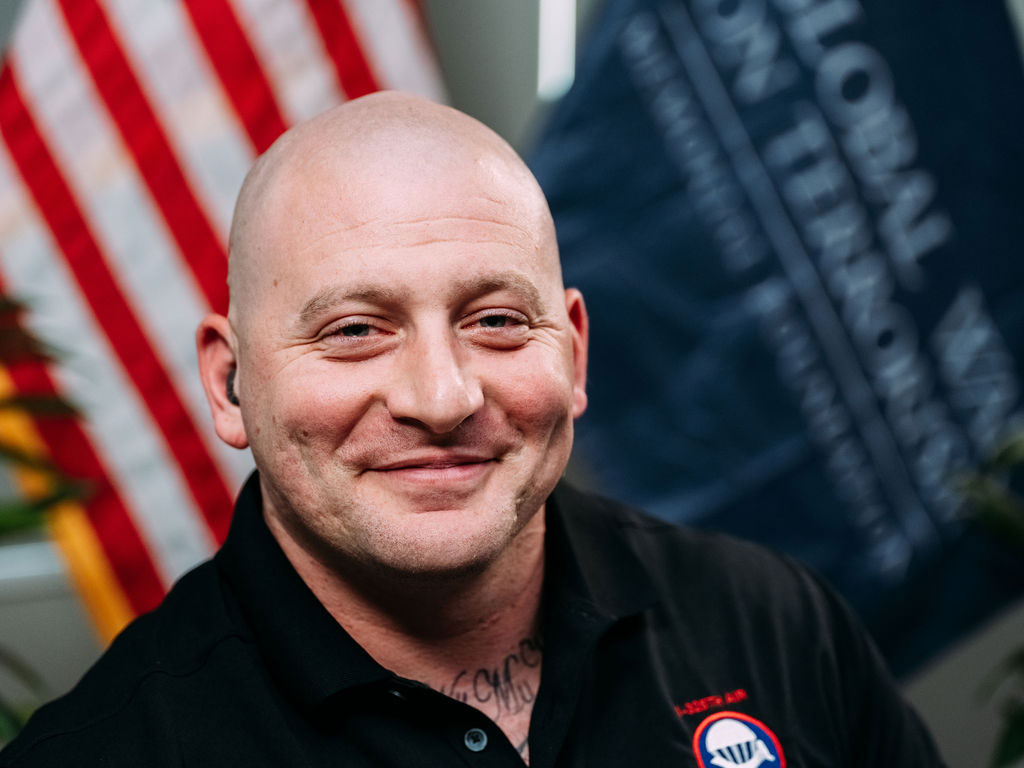Michael Cannelongo is a dedicated service member with two decades of experience in the U.S. Army. He served as an infantryman and deployed multiple times during the Global War on Terrorism. Michael has faced intense combat throughout his career, led troops in kinetic environments, and embodied the selfless service that defines military commitment. As a member of the Global War on Terrorism Memorial Foundation’s Design Advisory Council, he contributes his knowledge and experience at war to ensure the Memorial honors all those who served and sacrificed.
Q: Growing up, did you always want to join the military?
Not at all. I had no intention of joining. I had a scholarship to the Culinary Institute of America and was on track to become a chef and eventually own a restaurant. My brother served in the Army from 1999 to 2002, which wasn’t unfamiliar to me. Then, one day, I just thought, “Why not? I’ll give it a shot.”
Q: How did training compare to the reality of combat?
They don’t teach you how to do one thing—they teach you how to do everything. This is how you respond to this… this is how you react to that… but what cannot be captured in a manual, a PowerPoint slide, or a video is the experience of being there. You must accept that you don’t know. You must accept that regardless of what happens, your only priority in life is to complete your mission. I had a job and liked it, and by the end of the first 90 days, I loved it, which was the scariest part.
Q: Can you tell us about one of your first missions?
On one of our first-night raids, everything moved fast. We had about 40 minutes to mobilize because it was a time-sensitive target. We were just a 12-man team on the ground and couldn’t get replacements fast enough for the ones we had lost in the previous weeks. We breached a four-building compound when we arrived, expecting to engage about five to eight enemy fighters. But once we were on the ground, we realized there were about 22. The entire operation was fast, intense, and unpredictable. It was the first time that I didn’t know what to expect. It was the first time I felt fear, and I didn’t even feel it immediately. It wasn’t until after that I truly understood what happened and what could have happened. In the moment you go into autopilot, afterward, I processed what happened to us. Just in time to get another target packet.
Q: Can you share the details of the mission where you were wounded?
We were dismounted and got hit by 82mm mortars. Trees were falling, debris was flying, and everything was chaos. A round had hit between my lead team and me, and they were out of communication. For a moment, I thought my whole team was gone.
We kept moving forward and called in air support, but not before the mortar crew broke contact and disappeared into the mountains. On our way back, we got ambushed again. That’s when I got hit—twice in the chest, once in the side plate, and shrapnel in my leg. I remember asking one of my men if he was okay because I felt something was wrong. As I returned to the mounted element, I fell into a wadi, and everything went hazy. The next thing I knew, they were needle-decompressing me because my lung had collapsed. I was hallucinating, barely aware of what was happening.
Q: How did you handle coming home from deployment?
Honestly, I did not want to come home. To keep myself busy, I threw myself into work—baggage detail, cleaning weapons—anything to stay occupied. Within four months, I had already volunteered for another deployment. I just wanted to go back. The Army was home.
Q: Your wife also serves on the Foundation’s Design Advisory Council. How did you meet Michelle?
Michelle and I met in Afghanistan when she joined my team. I used to purposely give her the wrong hit times so she wouldn’t show up. She upset the status quo, and I was worried. I did not want another distraction, not because she was a woman but because she was new. And to me, anything new and unfamiliar was dangerous—at least, I thought. Michelle proved me wrong.
Q: How did your perspective on service change over time?
At first, I didn’t think much about it. It was just a job. But over time, it became my identity. You do it because your people need you. My biggest fear wasn’t dying; it was not being there for my guys when they needed me. But later on, something shifted. I found a reason to come home. My wife, Michelle, and I got married on mid-tour leave, and when I went back, it was different. I was okay coming home for the first time because I had something to go home to.
Q: What does this Memorial mean to you?
The Memorial represents everything we cannot or will not say about the war. The Memorial will capture the meaning behind why we did what we did and pay homage to the ones who never made it home. The Memorial will represent the families that have stayed up wondering when the next Sat phone call will come, deathly afraid of falling asleep and missing it. This Memorial will be a place where those who have had to accept remains and bury them can find closure. This Memorial will be where no words need to be spoken, no book needs to be read, and no movie needs to be played. This Memorial will be where we can all truly find peace.

